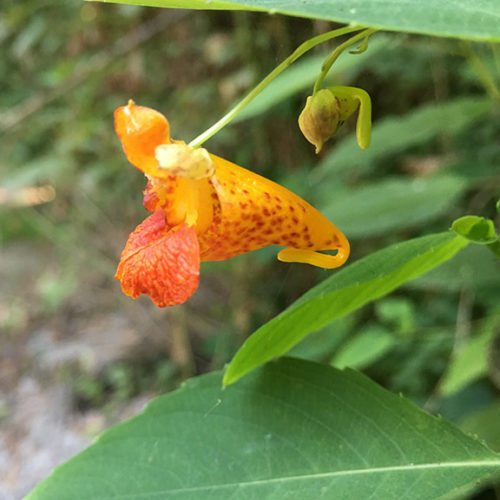Jewelweed: A Timeless Medicinal Marvel
Jewelweed Plant's crushed leaves and stems were used to treat skin irritations, burns, and insect bites as a way to harness its medicinal properties. Early pioneers learned from indigenous people how to use this plant for herbal remedies which remain part of traditional medicine today. Natural compounds in this plant including its saponins make it effective for soothing rashes and reducing inflammation.
Herbalists investigated its potential for internal medicinal applications beyond its use on the skin. Herbalists believed that leaf decoctions from this plant helped maintain kidney health and assisted with detoxification in the body. The medicinal importance of this plant reached worldwide recognition while apothecaries kept dried extracts readily available to treat skin conditions. The natural healing properties of this plant continue to attract attention from today's herbalists who persistently study and use its benefits despite pharmaceutical advancements.
Jewelweed Plant Is Nature’s Own Remedy for Skin Relief
Its primary celebrated use stems from its capability to relieve skin conditions and soothe irritation that arises from plant toxin exposure. Affected skin areas get immediate relief when crushed leaves and stems release their mucilaginous juice. The plant breaks down urushiol oil from poison ivy and poison oak which leads to severe allergic reactions.
Research studies confirm that its juice functions as a natural remedy which is effective against rashes, burns and insect stings. Outdoor enthusiasts together with herbalists consistently carry this plant because they understand how quickly it delivers relief. People utilize its extract-infused teas and salves to treat fungal infections and eczema which demonstrates its range of uses in holistic medicine practices.
A Landscape Favorite for Natural Beauty
Jewelweed Plant adds striking visual appeal to shaded gardens and natural landscapes while providing medicinal benefits. The delicate orange or yellow trumpet-shaped flowers rest on slender stems to create an enchanting visual effect when morning dew settles on them. Damp woodlands and stream banks with rich moist soil provide the perfect habitat where this plant flourishes unlike other flowers.

Gardeners and conservationists value this plant for its ability to prevent soil erosion since the roots hold the ground together in moist conditions. This plant brings enchanting beauty to rain gardens and water features while supporting biodiversity. The plant's natural reseeding process makes it an excellent choice for naturalized zones where it fills woodland edges and shaded garden spots with vibrant color during the entire growing season.
Jewelweed Plant Is Great For Attracting Wildlife
Jewelweed Plant functions as a key support system for wildlife especially for species that typically receive less attention. The plant's distinctively shaped flowers attract hummingbirds as its most common visitors. The rapid wingbeats and hovering powers of these birds make them ideal pollinators for this species which maintains its reproductive cycle.
The nectar of this plant supports not only hummingbirds but also some long-tongued bee and butterfly species. Through their pollination activities, these insects maintain ecosystem stability by facilitating the plants' natural reproduction process. The ruby-throated hummingbird's migration period coincides exactly with this plant's bloom cycle which creates one of the most interesting ecological relationships. The simultaneous timing of the bird’s migration with the plant’s flowering period demonstrates nature’s complex interdependence through mutual benefits to both organisms.
The vegetation functions as a food source for moth larvae which are important visitors although they remain lesser-known. The plant sustains insects which play a vital role in the food web thereby providing essential nourishment to birds and other wildlife that eat caterpillars. Deer and small mammals sometimes feed on its leaves but avoid it as their primary food source because of its bitter flavor.
The Mesmerizing Appearance of Jewelweed Plant
Jewelweed Plant's unique beauty stands out against any background landscape. The plant displays pendulous flowers that take the form of small trumpets or gentle lanterns and display captivating blends of orange with yellow and red colors. The speckled markings on the petals create a distinct artistic quality for each individual flower. The flowers dangle from slender arching stems and move gently even with minimal wind creating an engaging visual display for viewers.